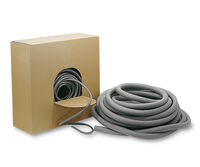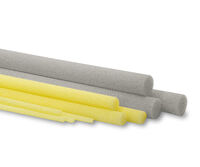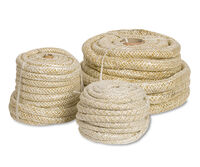Frequently asked questions
The round cords are intended for backfilling of connection joints and construction joints.
The backfilling material serves to limit the joint depth or to set the correct sealant depth in order to achieve the prescribed joint dimension and prevent three-point adhesion.
Yes. The standards DIN EN 13501-1 and DIN 4102 must be taken into account here.
That depends on the backfilling material used. The diameter of the round cord to be incorporated must be larger than the available joint width to be sealed.
The following applies for EGOFILL PE: The size must be chosen such that the diameter is compressed by approx. 20 to 25% upon installation and is installed deep enough that standard-compliant joint dimensions in accordance with DIN 18540 are ensured for subsequent sealing with sealant.
The following applies for EGOFILL PUR:
The size must be chosen such that the EGOFILL PUR is compressed by at least 25% upon installation.
In general, the following applies: The diameter should be one quarter to one third larger than the available joint width.
Yes, it can, since the backfilling material itself cannot absorb water. The water retention of the backfilling material may not exceed a limit of 1 g/100 cm3 measured in accordance with DIN 52459.
The backfilling material must ensure even limitation of the joint depth which is as convex as possible – i.e. the joint should be somewhat thinner in the centre that at the side contact surfaces. The joint cord must be compatible with the sealant and may not prevent it from changing shape. The backfilling material may not be broken during installation, e.g. through the use of sharp-edged tools, and must be installed in a compressed state in order to ensure sufficient resistance during the application and smoothing of the sealant. The diameter should therefore be one quarter to one third larger than the available joint width.


